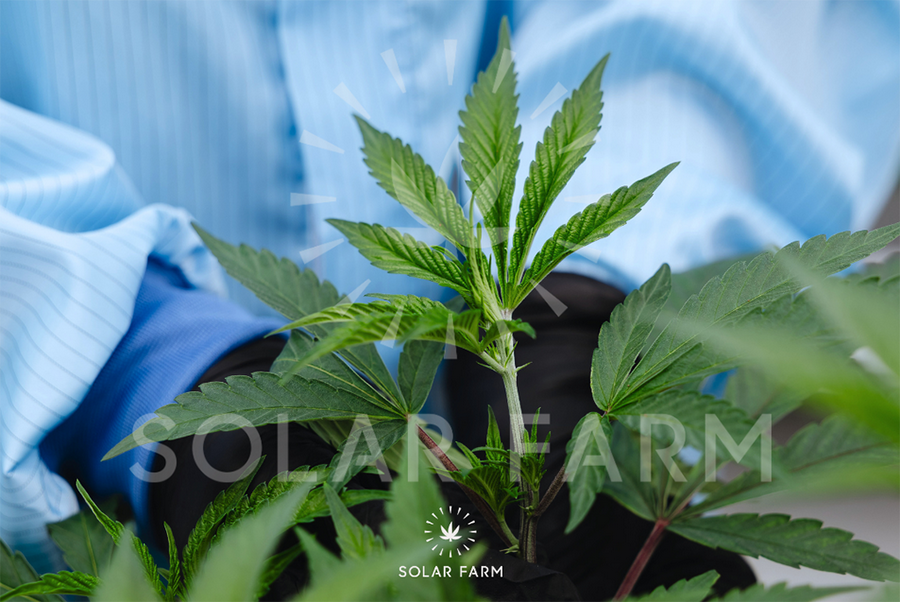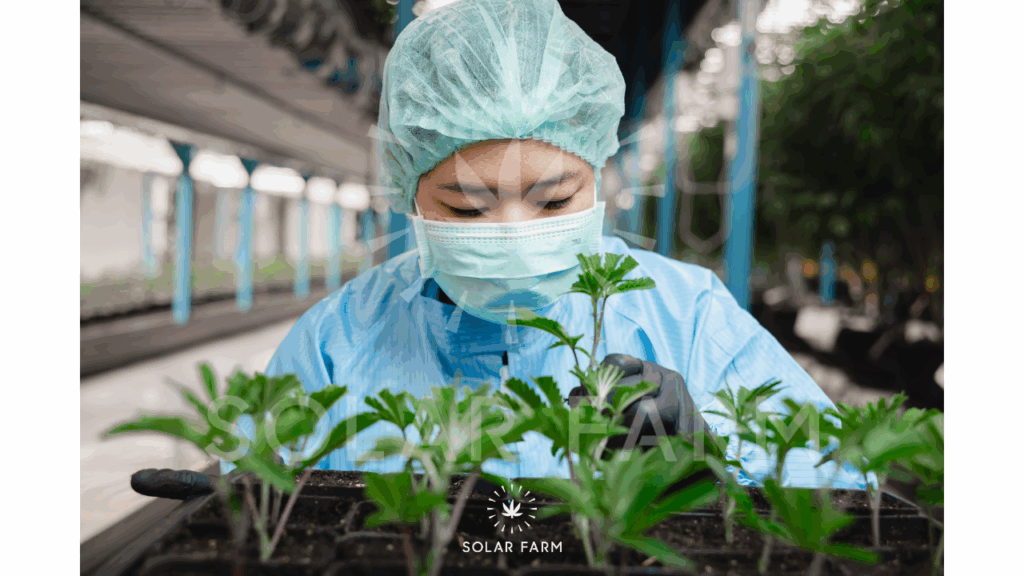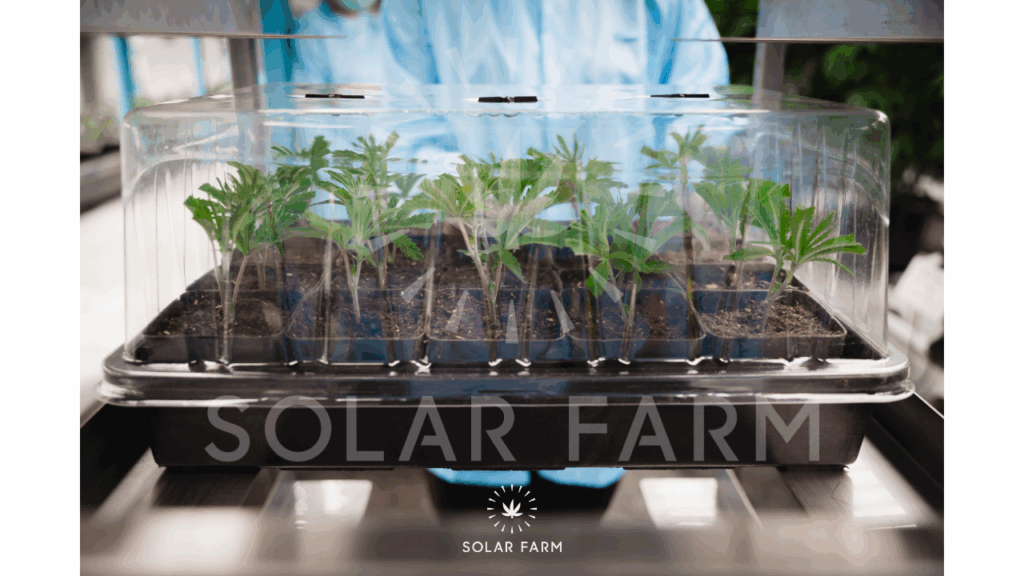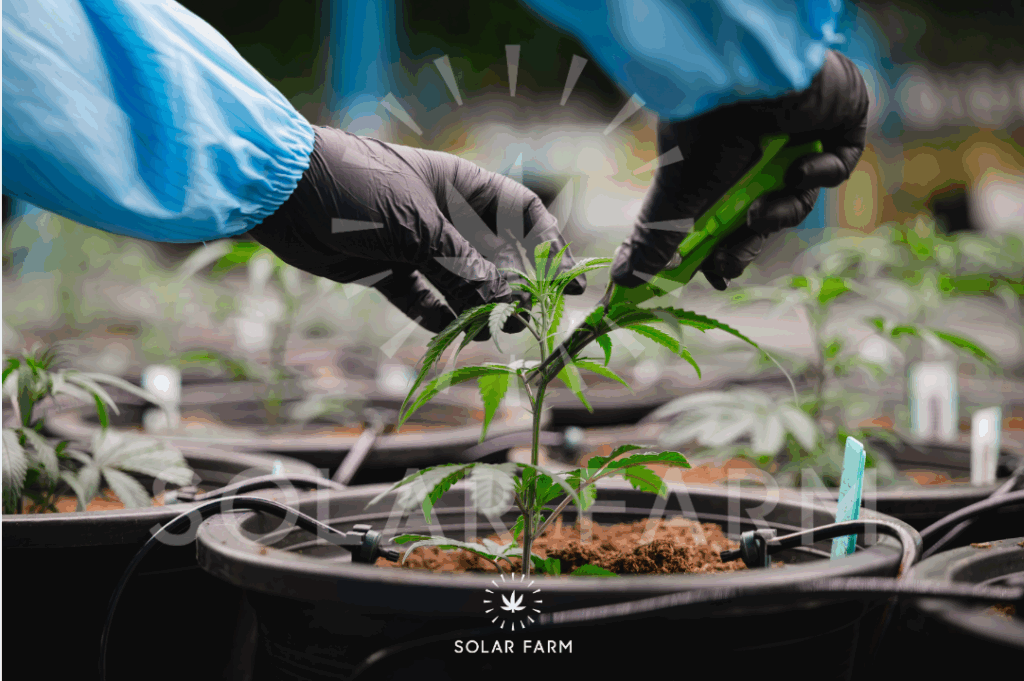Why Cultivation Practices Matter

A successful cannabis farm Bangkok runs on disciplined, GACP-aligned cultivation practices, not just genetics or lighting. Standardized soil preparation, topping, temperature &humidity control, and CO₂ management keep plants in target ranges, prevent nutrient and disease issues, and produce uniform, medical-grade lots. Consistent execution builds traceability and audit readiness, improving acceptance for cannabis wholesale Thailand.

How Cultivation Practices Create Quality
Quality follows a simple loop: set targets, measure, act, and log. As a result, daily work becomes repeatable at Solar Farm Thailand.
-
- Soil preparation: Set pH 6.0–6.5. Then measure substrate pH and EC. Adjust with buffered feeds as needed. Finally, log batch ID, readings, and operator.
-
First topping: Schedule for days 19–21 with 6-branch eligibility. Next, inspect structure. Cut above the fourth node. Then record plant IDs and date.
-
Humidity control: Set weekly RH targets. Read canopy sensors. Adjust dehumidifiers and airflow. Verify with trend charts and note deviations.
-
CO₂ management: Set stage-based ppm targets. Monitor during lights on. Tune injection to PPFD. Record hourly averages and alarms.
KPIs to watch: time to root, uniformity at transplant, mold incidence, and harvest moisture and water activity.

Cutting and Rooting

- Soil preparation: fill 4-inch pots with washed, aerated peat moss blend
- pH setup: pre-water and adjust substrate to pH 5.7–6.0
- Cut selection: take shoots from verified, healthy mothers only
- Rooting aid: dip cuts in rooting solution and plant immediately
- Humidity control: use domes 10–18 days with gentle airflow and 24–26 °C
- Logs: record mother ID, date, operator, and tray location
Outcome: fast, uniform rooting that shortens veg and improves lot consistency at a cannabis farm in Bangkok.

First topping
- First, schedule topping for days 19–21 after transplant.
- Next, confirm eligibility: the plant has six healthy branches; delay if fewer or if stressed.
- Then, count four branches above the soil line and cut above the fourth node.
- Aftercare: maintain RH 60–65% and temp 24–26 °C for 24–48 hours; avoid heavy feed the first day; resume standard fertigation on day 2.
- Logging: record plant IDs, date, operator, and any deviation.
Outcome: two strong leaders, balanced structure, uniform height.
Transplanting to Larger Pots
Once roots are established, we transplant clones under GACP controls.
- First, prepare 12-inch pots and bring the media to field capacity.
- Next, transplant rooted clones at the correct depth and firm the media.
- Then, connect irrigation lines, verify flow, and turn on lights.
- Finally, monitor for 24–48 hours and proceed with vegetative growth for 6–7 weeks before flowering.
As a result, controlled transplanting supports uniform development and consistent lots for cannabis wholesale in Bangkok.
Second topping
- Timing: 7–10 days after first topping, when each new leader has 3–4 nodes
- Eligibility: no signs of stress or deficiency; internode spacing is tight; canopy height target still within veg plan.
- Cut location: top each leader above the third node to create four main colas
- Aftercare: hold RH 58–62% and temp 24–25 °C; CO₂ 800–1000 ppm during lights on; support branches with early trellis if needed.

- Logging: capture plant IDs, cut height, node count, and recovery check at 24 hours.
Outcome: 4–8 evenly spaced tops, better light distribution, smoother transition to flower.

Pruning and Lower Branch Removal
Clean structure improves airflow, light penetration, and flower quality.
- On day 21 of flower, first remove weak lower branches that will not produce saleable tops.
- Then de-leaf large fan leaves that block light or airflow while maintaining vigor.
- Afterward, confirm fan coverage and trellis spacing to keep air moving through the canopy.
- Additionally, monitor for hermaphrodites and pests, and record actions with photos.
As a result, canopies stay even, mold risk drops, and buds are more uniform to medical-grade specs.
Propagation creates uniform starts, transplanting locks in steady growth, topping builds structure, and pruning stabilizes the canopy. Together these steps keep plants inside target ranges and produce traceable.
